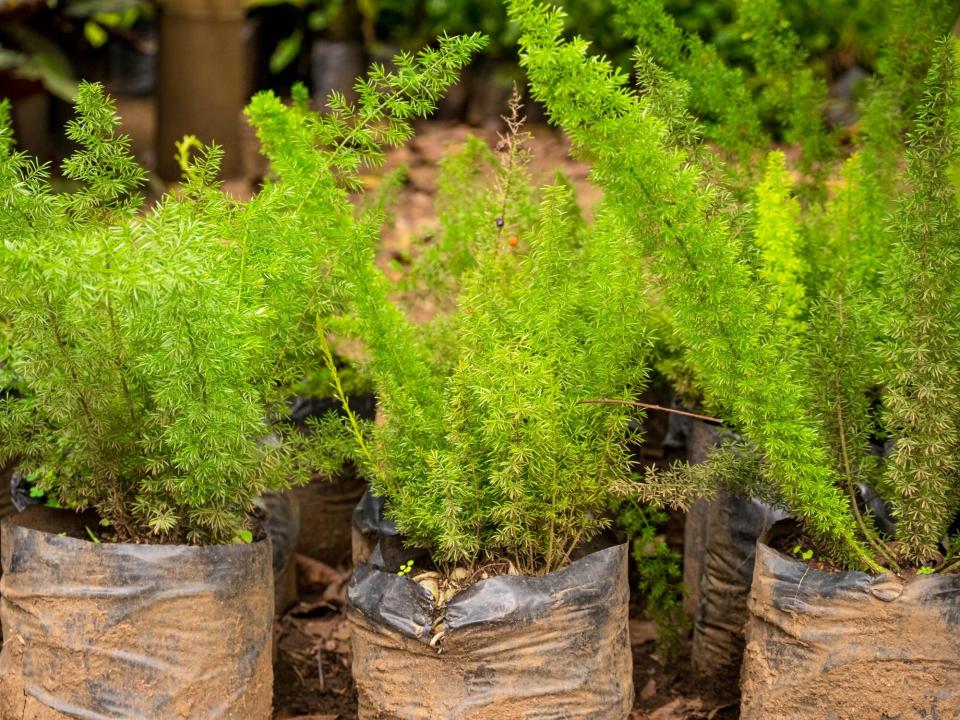Your Guide to Planting, Growing, and Caring for an Asparagus Fern
The asparagus fern, or Asparagus densiflorus, doesn't have much in common with the vegetable with which it shares a name. Instead, the fern (which isn't technically a fern either), is a leafy green decorative plant that has fern-like fronds. This climbing plant makes a great addition to flower pots and garden beds and is easy to care for once it's established.
Related: How to Grow and Harvest Asparagus at Home

All About Asparagus Ferns
Contrary to its name, an asparagus fern is not a fern at all according to Jon Roethling, director of Reynolda Gardens. "It is a perennial belonging to a very diverse groups of plants including our edible asparagus (Asparagus officinalis)," he says. "The cultivar 'Myersii' is commonly referred to as Foxtail Fern and 'Sprengeri' is what you typically find sold as Asparagus Fern and are typically what you will find sold in garden centers." However, Roethling says that there are over a hundred species of Asparagus, so if you're looking for a hardy leafy green you will likely be able to find the perfect one for your garden.
Buyer Beware
While a lot of varieties of the asparagus fern may look like delicate plants, Vicky Popat, CFO and tropical plant expert at PlantOGram, warns that they are anything but. In some circumstances, they can even be toxic to children and pets. "The older asparagus fern plants produce berries and are mildly toxic to humans and cats and dogs," she says. "If consumed, the berries of the plant may cause gastrointestinal issues, such as diarrhea, vomiting, and abdominal pain." If you have small children or pets, you may want to avoid planting this leafy green in or around your home.
How to Grow Your Own
Asparagus ferns are considered invasive in some areas of the country, so Roethling advises gardeners check with their local townships and municipalities before planting them to see if they are on a banned list. If they are not, he says all you'll need is a partially shaded area that doesn't see the full afternoon sun in order to grow them. "They enjoy moist, well drained soils and are considered hardy into zone eight," he says. "You can consider planting them outside in some protected areas of zone seven b." Just be sure to avoid planting them in areas that stay wet, especially in the winter.
You Can Skip the Fertilizer
Asparagus ferns are not heavy feeders, so they don't need to be fertilized as much as some other plants. If you do decide to give your plants a boost with some fertilizer, Roethling recommends using a half strength fertilizer, and then only during the growing season. "As temperatures begin to cool down in fall you can stop fertilizing."
Where to Get Your Own
You can grow this plant from seed, or, Popat says you can get a gorgeous specimen from your garden center. They are also easy to divide into sections (each with a portion of the root) to grow your own. "So, if you know someone that has one of these beauties ask them if you can have a shoot," she says. "They take very easy and create gorgeous full foliage." They are usually inexpensive to purchase, according to Roethling, but he advises that you opt for plants that are potted in containers that are four inches or larger to start.

